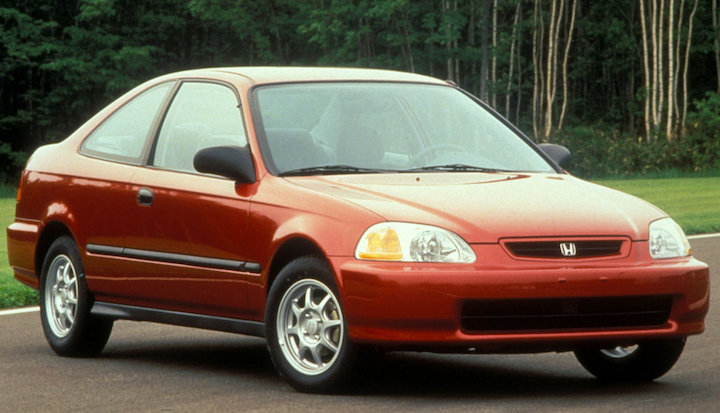From subcompact to sedan — How the Honda Civic has changed

1995 Honda Civic Coupe
(May 25, 2018) A new, downloadable ebook shares more than 40 years of Honda Civic history covering the evolution of the Civic through 10 generations, from the affordable, subcompact of the early 1970s to the current high-performance trim level. The team at HondaPartsOnline.net researched and developed this free download to celebrate the enduring popularity of Honda’s economical and reliable Civic.
"We're know the 2019 Insight is replacing the Civic hybrid,"says HondaPartsOnline.net director, Cesar Aranda. “That got us talking about the Civic's engine changes and models that have been discontinued and reintroduced within the Civic line. Expanding on that, we just delved into the car's history and decided to share it.”
Here are some highlights from the ebook:
• The 1973 subcompact Civic was introduced as both a coupe and a hatchback. It had a low base price of $2,200 and offered 40 mpg on the highway. The independent strut-type suspension not only increased maneuverability, but it made the ride more comfortable for all four passengers. By the end of that year, Honda had sold 80,000 units.
• In 1975, Honda met the challenge of new emissions standards with the new CVCC system. The Civic 1500 was equipped with a new engine that reduced emissions and produced 53 horsepower. Despite the new technology, Honda kept the base price low. Civic sales in 1975 increased by almost 60,000 over the previous year.
• Once the Civic’s CVCC engine was where Honda wanted it, they shifted their focus to the cosmetic. For the 1978 model, they redesigned the grille, moved the hood vents from the side to the rear, and lowered the turn signals to the bumper.
• The second generation Civic started with a 3-door hatchback and a 5-door hatchback. Each had a sleeker body, expanded windows, and improved suspension system. Motor Trend awarded the 1980 Civic U.S. Import Car of the Year. Honda added a 4-door sedan and country station wagon body styles in 1981.
• Although the 1984 Civic received an extended roof and its wheelbase grew by five inches, the third generation Civic was still classified as a subcompact car. The car’s new boxy design maximized interior space, and the new design was hailed as revolutionary. One of the things that made the third generation so unique is that it’s the only generation when the CRX was classified as a Civic. This is also the generation that introduced the Si.
• Like the first Civic models, the fourth generation cars featured a unique suspension setup. However, Honda designed a fully independent rear suspension system with a control arm setup instead of using the four-wheel independent strut-type suspension system found in the first generation. All the U.S. models also received an electronic fuel injection system.
• The VTEC engine didn’t make its way to the U.S. until the beginning of the fifth generation. While the Si and SiR trim levels are among the most sought after trims from the fifth generation, other trim levels such as the DX and VX also became popular with the tuning crowd. The Civic’s simple design allowed car enthusiasts to swap the factory VTEC-E engine or lower-end SOHC VTEC engine for a more powerful engine.
• For the sixth generation, Honda added the new CVT transmission system called Multimatic, which was designed to create a smoother ride by absorbing shock during gear shifts. In 1999, they brought back the Si as a coupe.
• The Civic stepped up to a compact car in the new millennium. Honda got rid of the control-arm front suspension system and replaced it with a strut setup. This freed up some room in the engine bay for the new Honda K-series engine. The Honda Civic Si hatchback returned in 2002 and a Civic hybrid was added to the line-up in 2003.
• All the models in the eighth generation got stability control and a new DOHC i-VTEC engine that performed like a large engine while offering the fuel efficiency of a smaller engine. In 2008, Honda offered only 1,000 units of the Mugen Si sedan, which was a beefed-up version of the already high-performing trim level.
• The 2008 recession prevented Honda from moving the Civic to the mid-sized sedan they had planned. The car maker kept the ninth generation Civics economical yet kept them current with the latest technology.
• Since the U.S. economy was in much better shape, Honda upped the Civic to a mid-sized sedan in 2016. The tenth generation Civic has more aggressive body styling. The current models have LED headlights and taillights, more curved lines (notably in the hood and windshield), new fog lights, and a redesigned front end with a new grille.
Download the entire ebook by clicking here.
